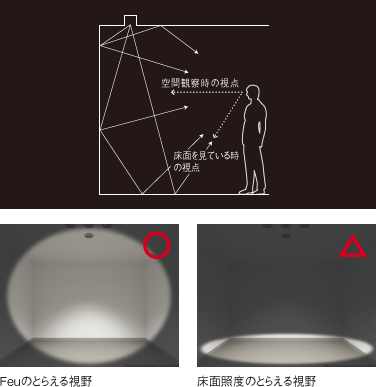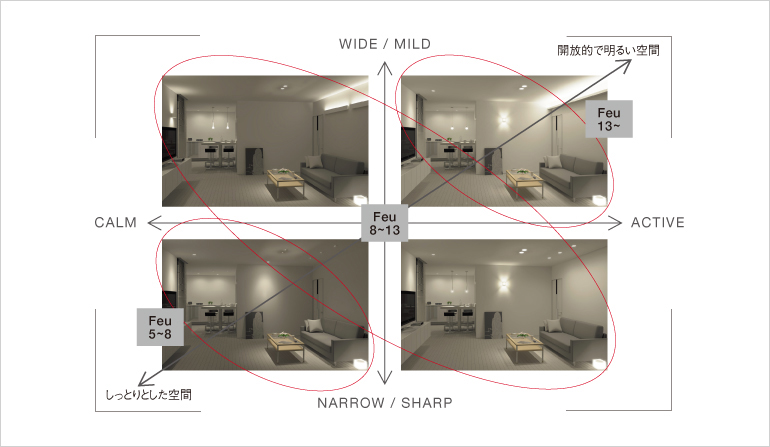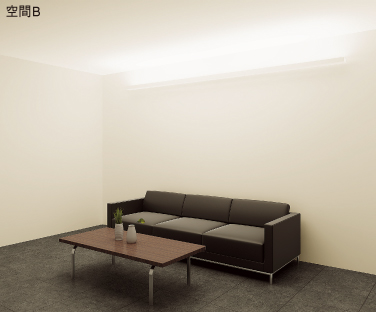How can light be measured to better improve spatial lighting and brightness? Japanese electronics manufacturer Panasonic introduces a new 3D lighting spatial measurement “Feu” targeted at architects and lighting designers during the seminar “‘Quality of Lighting’—Brightness and Efforts to Improve the Quality of Lighting” that took place on Jan. 17, the third day of Lighting Japan 2014.
 |
|
Panasonic illustrates the difference between Feu (left) and lux (right) in this photo on their Japan website. (Photo Courtesy of Panasonic) |
The light measurement Feu was introduced by Panasonic about two years ago, but remains a relatively novel concept to industry insiders. When seminar presenter Muneatsu Yazawa from Lighting Application Team at Panasonic Corp. asked if anyone had heard about the lighting index before, not a single person at the tech seminar raised their hands. The major difference with the Feu index measurement compared to lux is it enables three dimensional lighting measurement.
 |
|
Comparison between the lighting effect between different Feu lighting shown on Panasonic Japan website. (Photo Courtesy of Panasonic) |
One of the applications where Feu can be used is measuring the lighting needed in a particular space. Lux only measures the floor surface, while Feu measures how people feel in a spatial lighting. Based on the company’s research, people are most comfortable in a lighting environment of Feu 10 to 13 (about 577 lx to 750 lx). Anything below Feu 6 (300 lx) is considered suppressive and uncomfortable.
 |
 |
|
Comparison between different Feu lighting,using two different Feu LED bulbs. Top: Uses four LGB70000 downlights that have a Feu index value of 8.4 and average 105 lx. Bottom: Uses two HGW4920 bay lights that have a value of 10.6 feu and average luminosity of 95 lx. (Photo Courtesy of Panasonic)
|
The company proposed incorporating Feu measurement technology into lighting designs could help reduce the number of luminaires and energy consumption, while maintaining the same brightness. Here is how it works. Feu-up type LED base-lights might share the same illuminance as conventional ceiling light’s 300 lx, but when measured in terms of spatial lighting the former has a higher 3D lighting index score of 8 Feu (about 400 lx). While there is little difference in illuminance, the Feu enhanced tube lights can achieve overall higher brightness.















